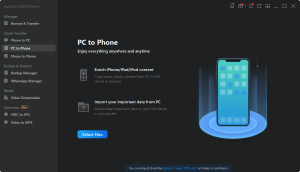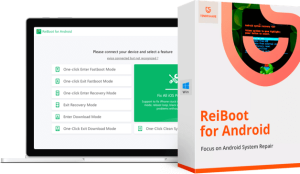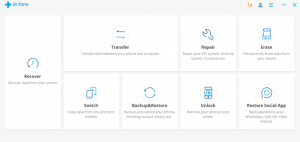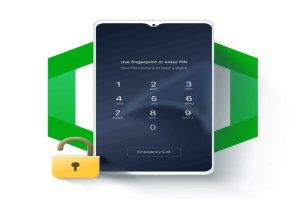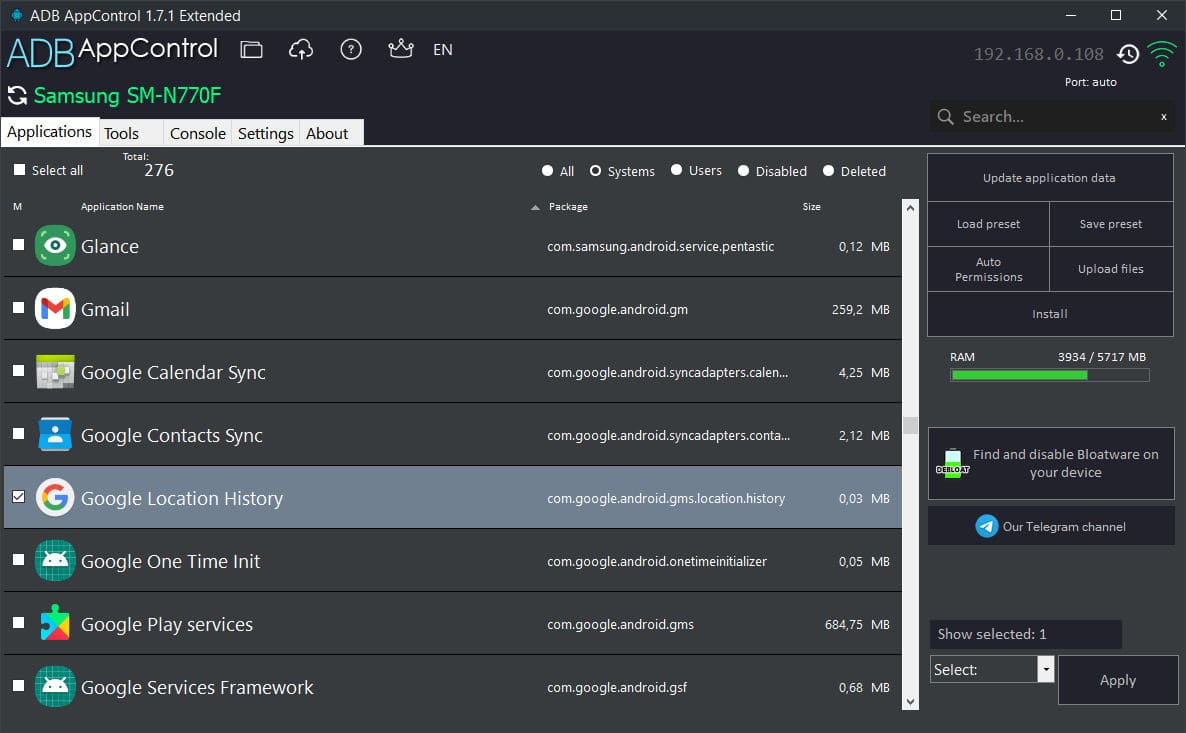
Introduction
ADB AppControl is a powerful tool that provides a graphical user interface (GUI) for managing Android applications on devices via the Android Debug Bridge (ADB). It is widely used by developers, power users, and enthusiasts who want to have more control over the applications installed on their Android devices. Here’s a detailed introduction to ADB AppControl:
1. What is ADB AppControl?
ADB AppControl is a Windows-based software that simplifies the use of ADB commands to manage Android apps. It allows users to uninstall, disable, or enable apps on their Android devices without needing root access. The tool is especially useful for removing or disabling pre-installed bloatware, managing system apps, and optimizing device performance.
2. Key Features:
- App Management: ADB AppControl allows you to view all the apps installed on your Android device, including system apps and user-installed apps. You can easily uninstall or disable apps that you don’t need, helping to free up system resources and improve performance.
- Batch Operations: The tool supports batch operations, allowing you to uninstall, disable, or enable multiple apps simultaneously. This feature is particularly useful when you want to clean up your device quickly.
- Backup and Restore: ADB AppControl enables you to create backups of apps before making any changes. You can restore apps from these backups if needed, ensuring that you can recover from any accidental deletions or changes.
- APK Installation: The tool allows you to install APK files directly from your computer to your Android device, bypassing the need to transfer files manually.
- Permission Management: ADB AppControl provides detailed information about app permissions and allows you to modify them as needed. This can help you enhance the privacy and security of your device.
- Safe Mode: The tool includes a “Safe Mode” option, which lets you experiment with disabling or uninstalling apps without risking system stability. If something goes wrong, you can easily revert the changes.
- Script Execution: Advanced users can execute custom ADB commands directly from within ADB AppControl, giving them full control over the device.
3. How It Works:
ADB AppControl works by utilizing the Android Debug Bridge (ADB), a command-line tool that allows communication with an Android device from a computer. ADB must be installed on your computer, and USB debugging must be enabled on your Android device for ADB AppControl to function.
When you connect your device to your computer via USB and launch ADB AppControl, it detects the device and displays a list of installed apps. You can then manage these apps using the tool’s intuitive GUI without having to enter any ADB commands manually.
4. Use Cases:
- Bloatware Removal: Users often use ADB AppControl to remove pre-installed apps (bloatware) that come with the device but are not needed. This helps in freeing up storage and improving device performance.
- Optimizing System Performance: By disabling or removing unnecessary system apps, users can optimize their device’s performance and reduce background processes that consume resources.
- Enhanced Privacy: Managing app permissions and disabling apps that unnecessarily request sensitive data helps in improving the privacy of your device.
- App Testing and Development: Developers can use ADB AppControl to install, uninstall, or manage apps during the testing and development process.
5. Advantages:
- No Root Required: ADB AppControl allows you to perform many actions that typically require root access, without actually needing to root your device.
- User-Friendly Interface: The GUI simplifies the process of managing apps compared to using ADB commands directly in a terminal.
- Safe and Reversible: The tool includes safety features like backups and safe mode, making it a low-risk option for managing system apps.
6. Limitations:
- Windows Only: ADB AppControl is only available for Windows, so users on other operating systems will need to find alternatives or use ADB directly.
- Limited to ADB Capabilities: While ADB AppControl enhances ADB’s usability, it is still limited by what ADB can do, which means some advanced features might not be available without rooting the device.
7. Installation and Setup:
- Prerequisites: Ensure that ADB is installed on your Windows computer and that USB debugging is enabled on your Android device.
- Download and Install: You can download ADB AppControl from its official website or other trusted sources. Installation is straightforward, and once installed, you can connect your device and start managing apps immediately.
8. Conclusion:
ADB AppControl is an invaluable tool for anyone looking to take control of the apps on their Android device. Its easy-to-use interface, combined with the powerful capabilities of ADB, makes it a must-have for Android enthusiasts, developers, and those looking to optimize their devices without the need for rooting. Whether you want to remove bloatware, manage app permissions, or experiment with system settings, ADB AppControl provides a safe and effective way to do so.
Details
1.7.4
ADB AppControl
August 10, 2024
Paid
No ads
Windows
Multilanguage
1087
__
__
Download

